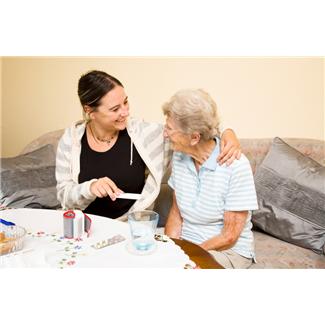As people grow older, often their mobility is decreased, and they find it hard to do everyday things that they once thought were easy. Loss of mobility is a part of growing older that is almost inevitable, but there are things that can be done to help the mobility of older people so that they still feel independent in their old age.
Mobility issues can occur due to health reasons or simply due to old age. As a person’s body grows older, their joints begin to deteriorate, and they become weaker. Their muscles will begin to atrophy, and they can even experience weakness in their bones and receive possible breaks or fractures. Arthritis can settle into their joints, causing pain and stiffness, which can affect their ability to move around properly.

Certain health issues that can arise as people grow older include; rheumatoid arthritis, osteoporosis and degenerative discs in a person’s spine. Elderly people can also experience slow reflexes, chronic fatigue and decreased flexibility. All of these health issues, and many more, can make it difficult for people to get around without aid or pain free. Another factor that is prominent in mobility issues with the elderly is the fact that the elderly have weaker immune systems compared to younger generations. As people grow older, their immune system weakens, and they are unable to fight off various diseases and syndromes. The elderly could catch many serious diseases which could easily take them off of their feet for weeks at a time.
Some of the common mobility issues that elderly people face can easily make them feel less independent and lower their self-esteem. Some of these issues include walking limitations, which requires the use of a medical walker, or even using a wheelchair for part or all of the time. These issues can arise from a medical problem, or they can arise due to old age. There are many ways to improve elderly mobility though, and in turn improve the self esteem of the person and give them back their independence.
Here are five different ways that an elderly person can improve their mobility.
- Include small amounts of low intensity exercise such as stretching, walking short distances or yoga into their daily routine.
- Make their home more handicap accessible by installing handrails for extra support.
- Rearrange their furniture, so that they can move easily from room to room.
- Try water-based exercises to improve joint and muscle health without adding more strain to their system.
- Hire a caretaker to help the person out with daily tasks and to encourage them to exercise and continue to move as much as they can.
Loss of mobility can be frustrating, and can often lead to a reduction of self-esteem. Many elderly people love being active, and if their activity level is taken away from them due to a medical issue or old age, they might find themselves depressed and agitated. To help them cope with their loss of mobility, encourage them to still try to be active. Their activity level might have to be decreased, but remind them that they can still move around, they just might need a little more help doing so.
If they continue to do short spurts of exercise throughout their day, then they will find that they can still do things around the house and become the independent person they once were. Whether they have to use a medical walker, wheelchair or a cane they can still go out and get around perfectly fine, they might just have to take more breaks than normal to rest.
Citations:
- Image from Microsoft Office
+Roxxy Sonnich blogs about fitness and health topics, and she’s passionate about helping elderly people find easier ways to get around, whether that’s by using medical walkers or remodeling their homes.

